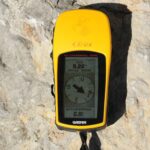
Observe The Weather Day
January 25th is celebrated every year as Observe the Weather Day. As the name implies, it’s a day for people to become excited about the weather and start observing it. Before modern meteorology, people would simply look up at the skies to try to figure out what the weather was going to be like, with varying degrees of accuracy.
Of course, modern meteorology still depends on Spot Spotters to be their eyes and ears to get a better understanding of weather phenomena. Everyone who has ever wondered about the weather and how it works might want to spend this day learning more about weather and meteorology.
The History of Observe the Weather Day
People have been observing nature to try to figure out what the weather was going to do since the dawn of humanity. In North America, the first systematic weather observations were made by Reverend John Campanius Holm in 1644.
Benjamin Franklin also documented the movement of a hurricane from Philadelphia to Boston during the year 1743. Since then, systematic weather observation has continued to grow and expand.
At this point in time, we’re unsure of where Observe the Weather Day began. We suspect that it was developed after National Weather Observers Day was created in 1989. That holiday is observed on the 4th of May and is very similar to this one. We’ll continue to try and research this holiday, but at the moment, it doesn’t appear as if we’re going to find out.
Important Facts About Weather
Below are some important facts about the weather that we think everyone will love. Let us all take a quick look at them as we continue our discussion for Observe the Weather Day.
- A cricket’s chirps can tell a person the temperature—if they count them.
- Mudslides can move not only rocks and trees but also entire buildings.
- Every minute on Earth, there are over 2,000 thunderstorms happening.
- Hurricanes can push over 6 meters of ocean water ashore.
- Heavy snowfall that obscures sight can make a person feel nauseous.
- Some frogs will croak more just before it rains.
- In 1684, the River Thames froze for over 2 months.
Observing Observe the Weather Day
On this holiday, people can take the time to learn more about the weather, try their hand at amateur meteorology, and share their findings on social media using the hashtag #ObserveTheWeatherDay.
Amateur meteorologists can also get together and have a weather-watching party. They can serve Hurricane Cocktails, enjoy some Dairy Queen Blizzards, or some Perfect Storm Cocktails.








